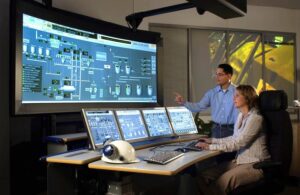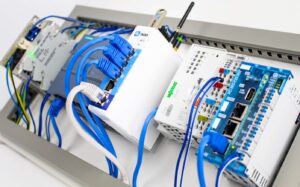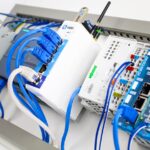#HMI – Human Machine Interface
#CHI – Computer-Human Interfaces
#RTU – Remote Terminal Unit
#IPC – Industrial PC
Supervisory Control and Data Acquisition (SCADA) systems are widely utilized for automation applications and represent an evolving field, with the latest products and services used daily for numerous industrial processes.
The comprehensive working operation and architecture of SCADA systems are essential for automation personnel. Also, the understanding of the integration of control devices, the #communication links between components, and for proper data monitoring and control of the system.
Historically, early pioneers invented numerous methods of remote control in the supervisory control field which have long become unknown. Control could be traced back to that era when operators read #measurements and take some mechanical control action based on the measurement outcome.
From the late 1800s to the early 1900s, the majority of patents on supervisory control were granted. Moreover, these patents were issued mainly to engineers working for telephone and other communication industries. The majority of #patents involving remote control could be traced back to the first automatic telephone exchange technique installed by Automatic Electric Company in 1892.
Furthermore, numerous varieties of #remote control systems were developed from 1900 to the early 1920s. Meanwhile, the majority were of only one class or the other. This implies that it can either be for remote control applications or remote supervision/monitoring-only applications.
John B. Harlow is one of the earliest pioneers of the modern #SCADA system which was attributed to him due to the system designed in 1921. Automatically, Harlow’s system detected remote station changes in status while giving reports to the central control system #facilities.
Likewise in 1923, a remote control system that makes use of techniques equivalent to our modern “check-before-operate” technique was developed by John J. Bellamy and Rodney G. Richardson. Essentially, this is to ascertain the selected control point validity prior to the actual control being initiated. Ultimately, the operator could likewise require for a point “check” to verify the status of the system.
In 1927, Harry E. Hersey designed the first #logging system. Essentially, this system has the capability to monitor information on the status of the equipment from a remote location. After, it reported and printed any change in the status as well as indicated the time and date when the change took place to the center #facilities.
In Conclusion
As the wide range of supervisory control applications revolutionized, so did numerous fundamentals of #supervisory #control #technology. Historically, all of the systems developed during the early years were electromechanical.
In this modern age, supervisory systems evolved to use #solid-state components, #electronic sensors, analog-to-digital converters, remote servers, and industrial IoT. In this revolution, however, the same remote terminal unit (RTU) configuration was maintained.
PhotoCredit: SolisPLC
@capacityindustrialautomationtechnologies





